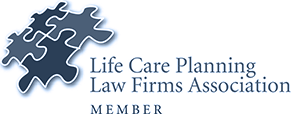Due to new legislation known as the Setting Every Community Up for Retirement Enhancement (“SECURE”) Act, enacted December 20, 2019, there are dramatic changes to retirement tax policy, particularly the rules that limit “stretch” IRAs, a concept we discuss during estate planning. The law affects all tax deferred qualified retirement plan accounts including IRAs, 401ks, 403(b)’s, 457’s, TSPs.
The key changes to retirement plan accounts and how they are administered are as follows:
- First Required Distribution Year (the year you must begin taking what is known as “RMDs” or “Required Minimum Distributions” also known as “Minimum Required Distributions” or “MRDs” for traditional retirement plans is the year you attain the age of 72, which was the year you turned 70 ½ under the old law. At least this makes the distribution year easier to calculate!
- There is now no age cap on contributions to Traditional IRAs. So now, there are NO excuses!
- Annuities are now permitted in 401k plans.
- Required Minimum Distributions over the life expectancy of beneficiaries (known as “stretch”) is now largely eliminated in favor of an “all money must come out of the plan by 10 Years” rule. This is by far one of the largest implications of the new law, ruining a highly favorable aspect to inherited IRA planning that permitted children and grandchildren to “stretch out” the IRAs as a tax-deferred compounding growth vehicle that was very powerful wealth-building technique for those beneficiaries upon the death of the retirement plan account owner.
As a result of the implementation of the SECURE Act, qualified retirement plan accounts naming beneficiaries other than those that are considered “Eligible Designated Beneficiaries” are subject to the new rule that forces the retirement plan account out of tax deferred status over a 10-year period, which will trigger an income tax event for those beneficiaries. This new law will impact the many clients desiring asset protection for those who will inherit qualified retirement plan accounts. The new law defines “Eligible Designated Beneficiaries” as only those people who can still “stretch-out” RMDs to potentially build higher wealth as a tax-deferred, compounded growth vehicle. Only the following beneficiaries will still qualify for this type of treatment. All others must have the retirement plan distributed within 10 years after the death of the account owner.
“Eligible Designated Beneficiary” includes:
- Surviving Spouse, outright or in a see-through trust known as a “conduit” trust;
- Minor child;
- Disabled individual as defined by statute;
- Chronically ill individual as defined by statute;
- Individual not more than 10 years younger than the employee
To see how you are impacted by this new legislation, even for surviving spouses, please call our office. The new law has generated a wave of inquiries so please be patient with our scheduling.
Wishing you all the best, always, Helayne Levy Payne and the team at the Elder Law & Life Care Planning Center






















0 comments